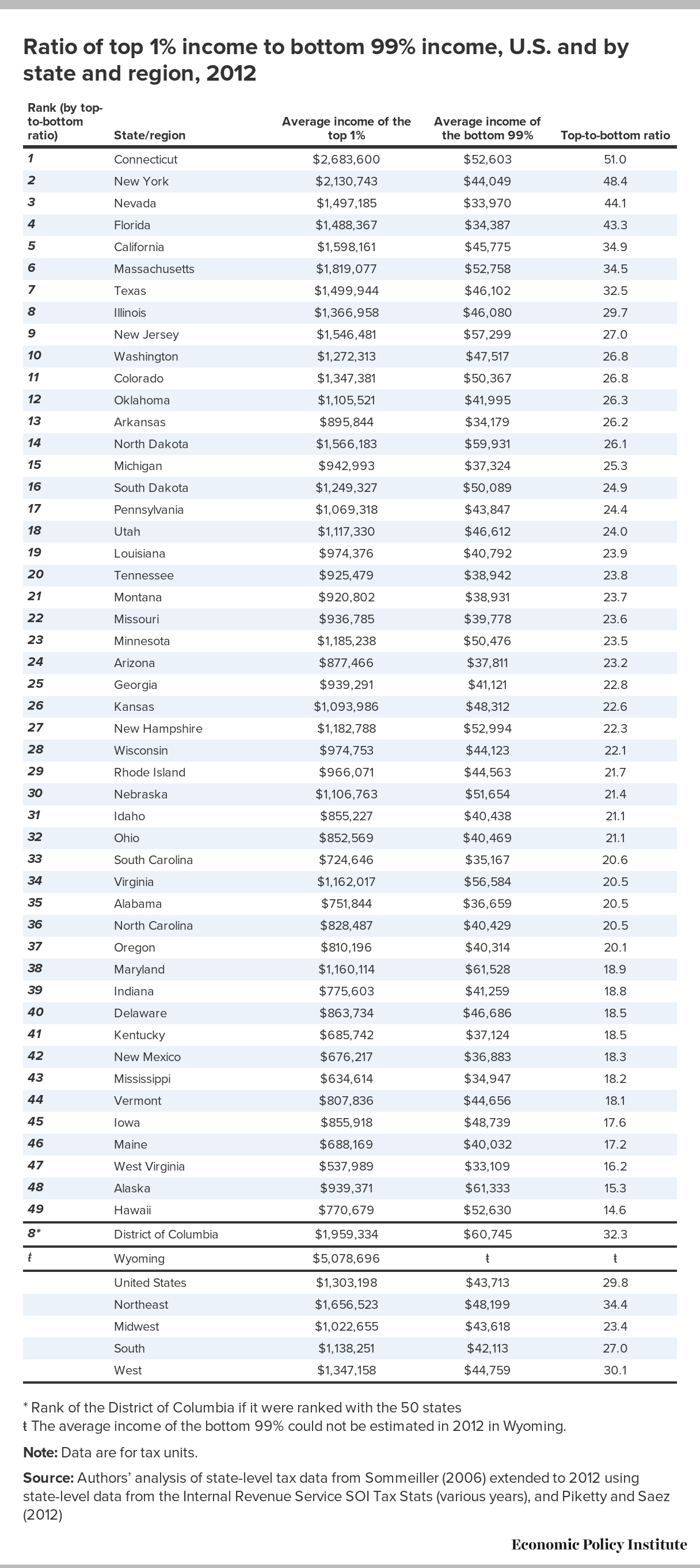Here's How Much You Have to Earn to Become the '1-Percent' in Your State

By:
In recent years, the perception that wealth and income disparities have grown wider and the economic elite more powerful has been backed by pundits, politicians, and a wealth of research. One such nugget of research from the Economic Policy Institute (EPI) breaks down how the top one percent has been doing as compared to the bottom 99 percent.
In short: they’re making a killing.
With the exception of West Virginia, and Wyoming where data for the 99 percent was not yet available, the income growth for the top 1 percent outpaced all other earners between 2009 and 2012. Furthermore, according to the report, in “39 states the top 1 percent captured between half and all income growth.”
The data comes from EPI's 2015 study "The Increasingly Unequal States of America," authored by economists Estelle Sommeiller and Mark Price.
Sommeiller and Price made these discoveries by analyzing data from all 50 states going as far back as 1917 and up until 2012. They also found that this extremely lopsided income growth was a long-term trend, with the top 1 percent pocketing 53.9 percent “of the total increase in U.S. income” between 1979 and 2007 — the latter year chosen because it coincides with the last moments prior to the Great Recession.
The income gap is also clearly demonstrated in a map showing comparative income ratio between each state's top 1 percent, and the rest of the population.
 Economic Policy Institute - epi.org
Economic Policy Institute - epi.org
One can see, for example, in the ratio map, that in states like New York and Connecticut the average member of the top one percent has more than 48 times the income of the average person in the bottom 99 percent. This inequality is exacerbated when race is factored in, with Black and Latino people also suffering from larger wealth disparities than then average white person.
Analysis similar to that provided in this report fueled movements campaigns such as the Occupy Movement, which the report seems to borrow language from, as well as the presidential campaigns of Vermont Sen. Bernie Sanders and, in part, Donald Trump. With the gap between the “haves” and “have nots” remaining wide, such analysis will likely prompt new movements to combat economic inequality.
